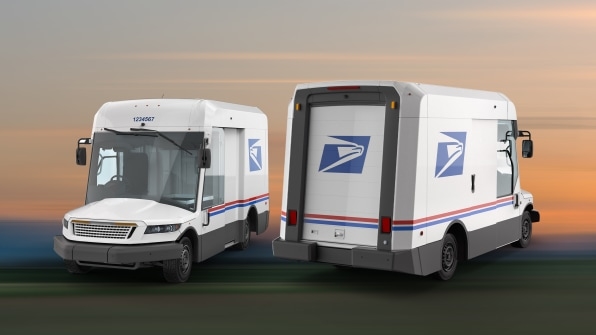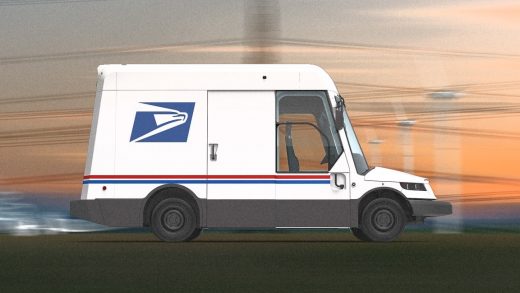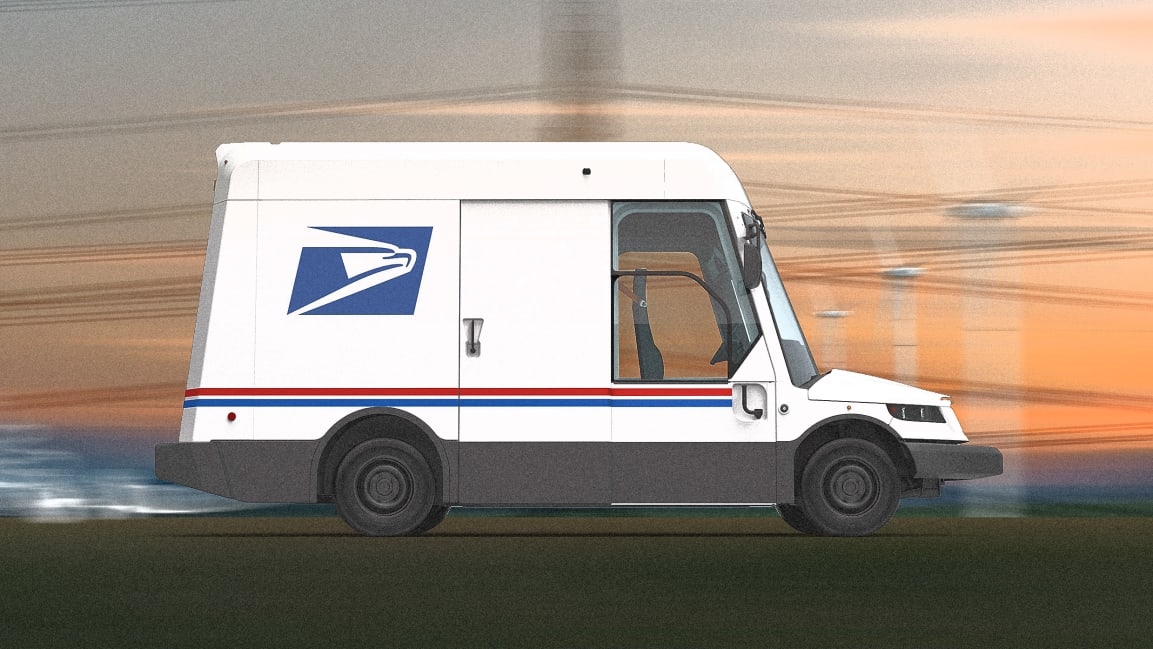Why isn’t the USPS fully electrifying its fleet? It’s a mystery
Oshkosh, the defense contractor that won the USPS contract with its dorkily cute design, says that its vehicle could run either on fossil fuels or on electric power and that the gas or diesel version could later be retrofitted to electric. But it appears that the company has never built an electric prototype; the prototype it submitted was not the vehicle shown in renderings but a modified Ford Transit van running on diesel. The USPS contract will pay the company $482 million to finalize the design before paying more for the actual vehicles. In a securities filing last November, Oshkosh admitted that, because demand for electric vehicles is growing, the company “may not have the expertise or resources to successfully address these pressures on a cost-effective basis or at all.” Workhorse, an Ohio-based electric vehicle manufacturer that did test an electric prototype on mail routes in an earlier stage of the multiyear process, lost its bid. (Oshkosh didn’t respond to a request for an interview, and Workhorse said it couldn’t comment.)
Lawmakers now want to see the details of the confidential contract between USPS and Oshkosh. Carolyn Maloney, the chair of the House Committee on Oversight and Reform, has given USPS a deadline of March 26 to share the Oshkosh contract and other documents from the negotiation. They want to understand why Oshkosh won the bid—and why USPS isn’t pushing aggressively for zero-emissions technology in the middle of the climate crisis.
For USPS, the tiny EV order “makes no sense and flies in the face of the Biden administration’s recent order to electrify the federal fleet,” said Ohio representative Marcy Kaptur (EV competitor Workhorse is headquartered in Ohio). Kaptur and other lawmakers are also asking for details about a suspicious $54.2 million purchase of Oshkosh stock, by an unknown person, that happened the day before the company won the contract. “This contract is a multibillion-dollar opportunity to reimagine the federal fleet and develop this critical domestic supply line,” she said. “We can’t fumble this opportunity.”
The average Postal Service truck is now 28 years old. If the next generation of trucks stays on roads as long and still uses diesel, the vehicles will still be polluting American cities by the middle of the century, when the world needs to reach net-zero emissions. And postal delivery vehicles are particularly well-suited for electrification.

“This is an ideal application for an electric vehicle,” says Mark Duvall, director of electrification at the nonprofit Electric Power Research Institute. “The cost advantages of running these vehicles—especially ones that spend a lot of time idling and have a lot of stop-and-go driving—off of electric power are considerable, both for the cost of the fuel and the maintenance.” Current mail trucks get around 10 miles per gallon and break down so frequently that USPS spends $2 billion a year on repairs. Electric vehicles can save money over time both because electricity is cheaper than fuel and because fewer parts mean less maintenance.
A recent study estimated that heavy-duty electric trucks, which are more expensive to make than mail trucks, can now save around $200,000 over a 15-year lifetime. And yet, in recent testimony, Postmaster General Louis DeJoy—the Trump donor known for making changes at USPS that slowed delivery before the 2020 election—claimed that the total lifetime cost of Oshkosh’s EVs would be more expensive than the fossil fuel-powered version, and said that USPS would need billions more to significantly increase the number of electric vehicles it chooses to purchase. But it’s impossible to verify this without seeing the contract. (He also arguably far overstated the cost of charging infrastructure, even though the trucks could use relatively low-power chargers as they sit overnight.)
Oshkosh might not be the right company to provide the technology. “I tend to believe that [Oshkosh’s] assertion of electric capabilities is a kind of wild exaggeration,” says Joseph Britton, executive director of the Zero Emission Transportation Association. “And I think the reason why you haven’t seen what that [electric] prototype looks like, and its functionality and specs and the pricing, is because I don’t believe it exists.” No other EV manufacturers make vehicles designed for a retrofit from an internal combustion engine to electricity; it doesn’t really make sense to use the same platform. But viable 100%-electric trucks do exist now.
USPS hasn’t shared the pricing of the new Oshkosh vehicles. The cost of batteries and other components has fallen steeply, and some electric cars are now at or near cost parity with their nonelectric counterparts. But a custom vehicle would cost more, Duvall says. The USPS contract calls for only 50,000 to 165,000 new trucks over 10 years. “That’s not a lot of volume,” he says. “You’re not going to get the same deal on battery cells and modules and drive systems that a Tesla is getting, or General Motors or Volkswagen will get.” That’s probably especially true for a company such as Oshkosh, which isn’t making other EVs. But it would be surprising if the upfront cost was so high that the agency wouldn’t save money over time, especially if the vehicles are in use as long as the current fleet.
It isn’t too late for USPS to change course. One recent bill proposes giving USPS $6 billion for new vehicles if 75% of the fleet is zero-emission. Congress “can set the equilibrium,” says Britton. “If the Postal Service is expecting to come back to Congress and ask for money, they might want to think about what Congress’s strong views on the issue are in advance, knowing that they’re going to condition any additional money on electrification. . . . If you look at the marketplace, you see that it’s rational and even commercially a strategic advantage to go electric.”
(32)



